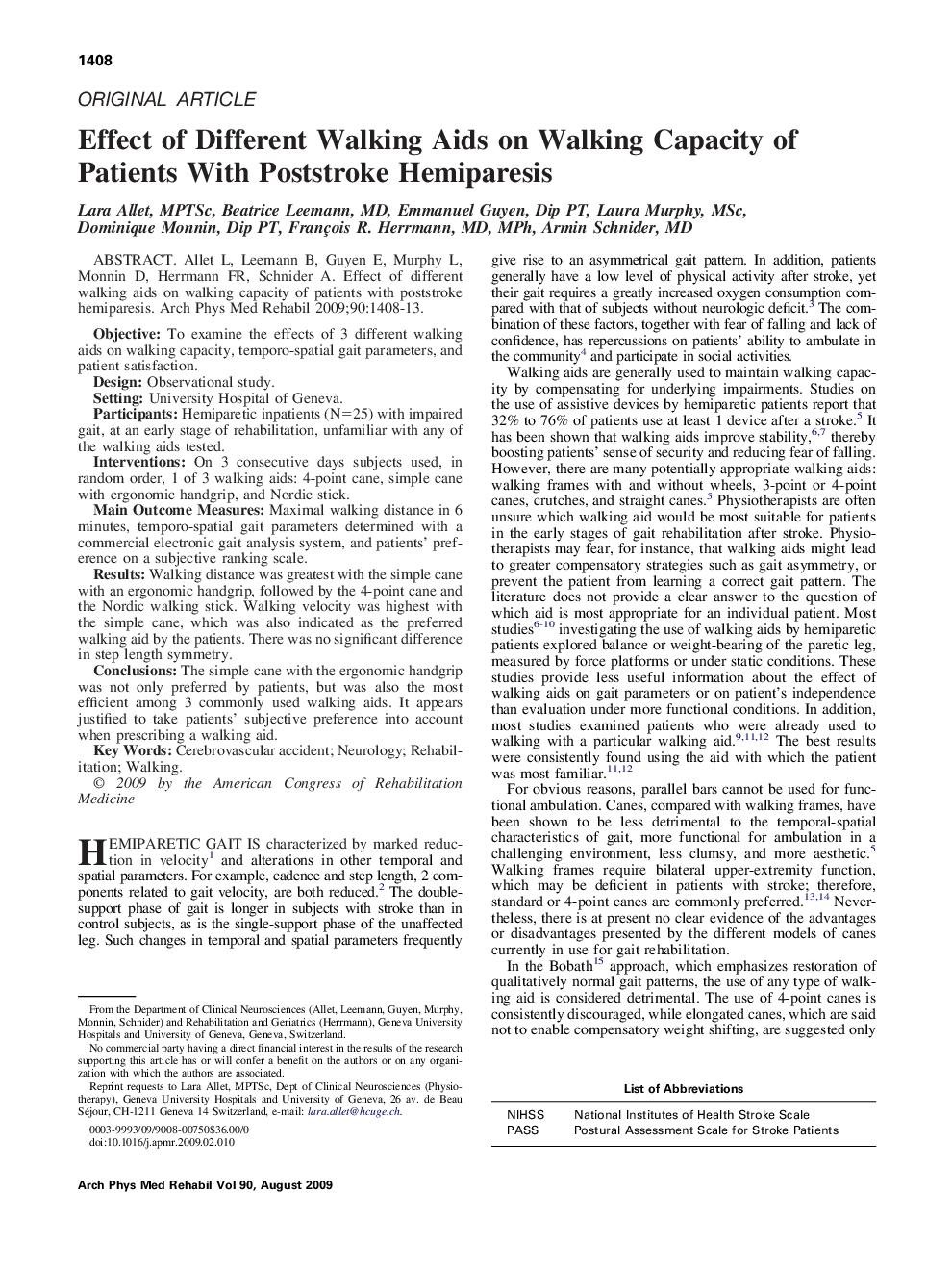| Article ID | Journal | Published Year | Pages | File Type |
|---|---|---|---|---|
| 3452187 | Archives of Physical Medicine and Rehabilitation | 2009 | 6 Pages |
Allet L, Leemann B, Guyen E, Murphy L, Monnin D, Herrmann FR, Schnider A. Effect of different walking aids on walking capacity of patients with poststroke hemiparesis.ObjectiveTo examine the effects of 3 different walking aids on walking capacity, temporo-spatial gait parameters, and patient satisfaction.DesignObservational study.SettingUniversity Hospital of Geneva.ParticipantsHemiparetic inpatients (N=25) with impaired gait, at an early stage of rehabilitation, unfamiliar with any of the walking aids tested.InterventionsOn 3 consecutive days subjects used, in random order, 1 of 3 walking aids: 4-point cane, simple cane with ergonomic handgrip, and Nordic stick.Main Outcome MeasuresMaximal walking distance in 6 minutes, temporo-spatial gait parameters determined with a commercial electronic gait analysis system, and patients' preference on a subjective ranking scale.ResultsWalking distance was greatest with the simple cane with an ergonomic handgrip, followed by the 4-point cane and the Nordic walking stick. Walking velocity was highest with the simple cane, which was also indicated as the preferred walking aid by the patients. There was no significant difference in step length symmetry.ConclusionsThe simple cane with the ergonomic handgrip was not only preferred by patients, but was also the most efficient among 3 commonly used walking aids. It appears justified to take patients' subjective preference into account when prescribing a walking aid.
